Themed collection Environmental Science: Processes & Impacts: Recent Review Articles

The reciprocity principle in mulch film deterioration and microplastic generation
Based on the reciprocity principle, this study evaluated the release and accumulation kinetics of microplastics from films, by developing an empirical model that linked the degradation performance of films under light with their molecular structure.
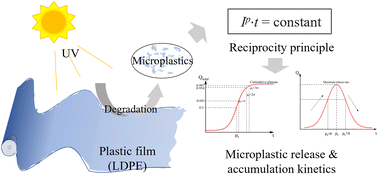
Environ. Sci.: Processes Impacts, 2024,26, 8-15
https://doi.org/10.1039/D3EM00402C
A perspective on iron (Fe) in the atmosphere: air quality, climate, and the ocean
We engage in research motivated by climate change and the impacts of pollution on air, water, and human health. The scientific community need to improve communication and knowledge exchange across disciplines to address pressing research questions holistically.
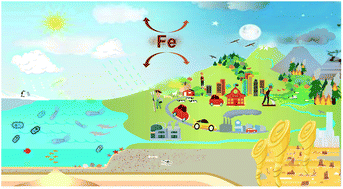
Environ. Sci.: Processes Impacts, 2023,25, 151-164
https://doi.org/10.1039/D2EM00176D
To be or not to be degraded: in defense of persistence assessment of chemicals
Characterizing the degradation behavior of chemicals in the environment is a key component of chemical hazard and risk assessment.
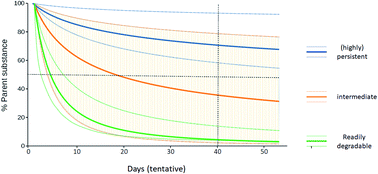
Environ. Sci.: Processes Impacts, 2022,24, 1104-1109
https://doi.org/10.1039/D2EM00213B
The case for a more precise definition of regulated PFAS
Many existing definitions of PFAS are overly broad, there is a strong case for a more precise definition of regulated PFAS.
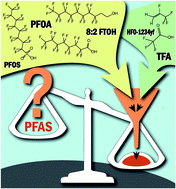
Environ. Sci.: Processes Impacts, 2021,23, 1834-1838
https://doi.org/10.1039/D1EM00296A
Unraveling biogeochemical complexity through better integration of experiments and modeling
A more ubiquitous use of process-based models will enhance the information gained from biogeochemical experimentation through both, a more rigorous interpretation of acquired data and the optimal design of future experiments.
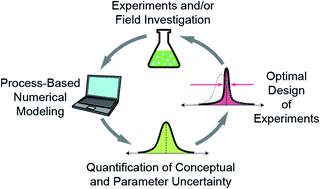
Environ. Sci.: Processes Impacts, 2021,23, 1825-1833
https://doi.org/10.1039/D1EM00303H
Influence of the SARS-CoV-2 pandemic: a review from the climate change perspective
This perspective article reports the possible relationships between climate change and the SARS-CoV-2/COVID-19 pandemic and vice versa.

Environ. Sci.: Processes Impacts, 2021,23, 1060-1078
https://doi.org/10.1039/D1EM00154J
A case study of SARS-CoV-2 transmission behavior in a severely air-polluted city (Delhi, India) and the potential usage of graphene based materials for filtering air-pollutants and controlling/monitoring the COVID-19 pandemic
This review summarizes the role of graphene-based nanomaterials, which show antimicrobial behavior and have antiviral efficacy, in reducing the spread of COVID-19.
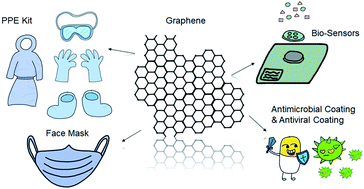
Environ. Sci.: Processes Impacts, 2021,23, 923-946
https://doi.org/10.1039/D1EM00034A
Microbial vesicle-mediated communication: convergence to understand interactions within and between domains of life
Extracellular vesicles are a ubiquitous but often overlooked biological component of all natural environments. Convergent interdisciplinary research highlights an effective approach to understand their properties and functions.
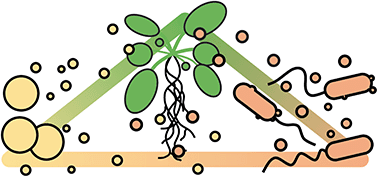
Environ. Sci.: Processes Impacts, 2021,23, 664-677
https://doi.org/10.1039/D1EM00022E
Vanadium: environmental hazard or environmental opportunity? A perspective on some key research needs
Limited information on the speciation of vanadium in the environment and anthropogenic emissions, coupled with toxicology heavily focused on V2O5 needs to be addressed to balance environmentally beneficial uses against potential harmful effects.
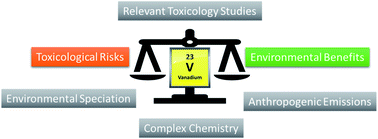
Environ. Sci.: Processes Impacts, 2021,23, 527-534
https://doi.org/10.1039/D0EM00470G
Electrochemistry coupled with mass spectrometry for the prediction of the environmental fate and elucidation of the degradation mechanisms of pesticides: current status and future prospects
The state of the art of existing/published work in the prediction of environmental degradation of pesticides by EC-MS/EC-LC-MS coupling was reviewed. Ways to improve EC-MS techniques in the prediction of environmental degradation were proposed.

Environ. Sci.: Processes Impacts, 2023,25, 340-350
https://doi.org/10.1039/D2EM00451H
Towards improved characterization of the fate and impact of hydraulic fracturing chemicals to better secure regional water quality
New approaches to better characterize chemical contamination from hydraulic fracturing of shale and other permeable rock formations for improved risk-based management are presented.
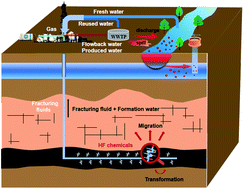
Environ. Sci.: Processes Impacts, 2022,24, 497-503
https://doi.org/10.1039/D2EM00034B
Water monitoring by means of digital microscopy identification and classification of microalgae
This review reports state-of-the-art methods for automated microalgae classification aimed at monitoring water ecosystem conditions by means of digital microscopy, its current state and indications of future directions the field is expected to take.

Environ. Sci.: Processes Impacts, 2021,23, 1443-1457
https://doi.org/10.1039/D1EM00258A
Fluorophores in surface freshwaters: importance, likely structures, and possible impacts of climate change
Fluorescence spectroscopy is very useful for the characterisation of organic matter in natural water samples. The importance of protein-like fluorescence might be enhanced by several events induced by warming in natural waters such as lake water.
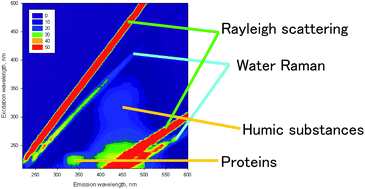
Environ. Sci.: Processes Impacts, 2021,23, 1429-1442
https://doi.org/10.1039/D1EM00273B
Red tides in the Galician rías: historical overview, ecological impact, and future monitoring strategies
The Galician rías (NW Iberia, Spain) are responsible for most of the national shellfish production. This is the first review of red tides in that area including an historical overview, social challenges and proposals for improving their monitoring.
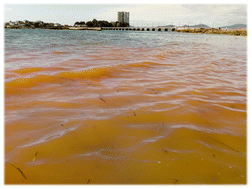
Environ. Sci.: Processes Impacts, 2024,26, 16-34
https://doi.org/10.1039/D3EM00296A
Current and emerging technologies for the remediation of difficult-to-measure radionuclides at nuclear sites
Effective remediation of a range of Difficult-to-Measure Radionuclides (DTMRs) in groundwater is needed to meet nuclear site end-state targets. This paper reviews recent developments in remediation of problem DTMRs, focusing on on-site application.
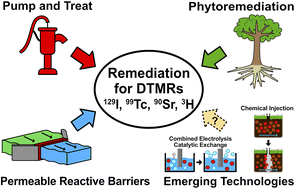
Environ. Sci.: Processes Impacts, 2023,25, 1909-1925
https://doi.org/10.1039/D3EM00190C
Photochemistry of oil in marine systems: developments since the Deepwater Horizon spill
Deepwater Horizon oil was exposed to sunlight in the Gulf of Mexico, changing its composition and behavior.

Environ. Sci.: Processes Impacts, 2023,25, 1878-1908
https://doi.org/10.1039/D3EM00248A
Mechanism and applications of bidirectional extracellular electron transfer of Shewanella
Electrochemically active microorganisms (EAMs) play an important role in the fields of environment and energy.

Environ. Sci.: Processes Impacts, 2023,25, 1863-1877
https://doi.org/10.1039/D3EM00224A
Impact of perfluorooctanoic acid (PFOA) and perfluorooctane sulfonic acid (PFOS) on secondary sludge microorganisms: removal, potential toxicity, and their implications on existing wastewater treatment regulations in Canada
There is limited data on perfluorinated PFAS, with PFOS and PFOA dominating the research field. Laboratory studies with these two compounds demonstrate potential biodegradation and bioadsorption, but also show negative impacts on the performance of AS and AGS after long-term exposure.
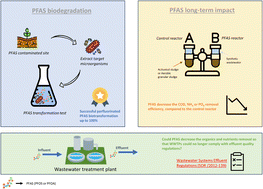
Environ. Sci.: Processes Impacts, 2023,25, 1604-1614
https://doi.org/10.1039/D3EM00202K
Biomonitoring, exposure routes and risk assessment of chlorinated paraffins in humans: a mini-review
CPs are extensively existed in human samples with increased M/S ratio. Dietary intake is the main source. The reported upper bound of EDIs may be close or exceed TDIs, thus further risk assessments are required.
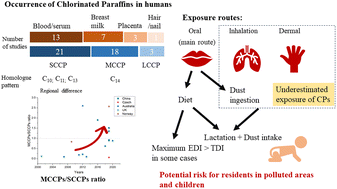
Environ. Sci.: Processes Impacts, 2023,25, 1588-1603
https://doi.org/10.1039/D3EM00235G
Analytical methodologies for oxidized organic compounds in the atmosphere
Recent findings on oxidized organic compounds in the atmosphere and analytical methodologies for their detection and quantification.

Environ. Sci.: Processes Impacts, 2023,25, 1263-1287
https://doi.org/10.1039/D3EM00163F
Lithium-ion battery recycling: a source of per- and polyfluoroalkyl substances (PFAS) to the environment?
PFAS are widely used in lithium-ion batteries, which may be problematic for the rapidly growing battery recycling industry.
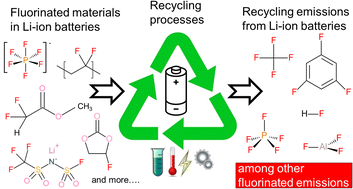
Environ. Sci.: Processes Impacts, 2023,25, 1015-1030
https://doi.org/10.1039/D2EM00511E
Research status of volatile organic compound (VOC) removal technology and prospect of new strategies: a review
The reaction mechanism on the right is realized in device 6 and the performance of the particle electrode is improved by the bimetallic load. The efficient removal of VOCs is achieved by the overall system.

Environ. Sci.: Processes Impacts, 2023,25, 727-740
https://doi.org/10.1039/D2EM00436D
Particulate matter and ultrafine particles in urban air pollution and their effect on the nervous system
Pollutant particulate matter and ultrafine particles have been related to the rise of neurodegenerative diseases and other brain disorders. It is necessary to understand their potential health impacts in order to develop strategies to reduce risks.

Environ. Sci.: Processes Impacts, 2023,25, 704-726
https://doi.org/10.1039/D2EM00276K
The present and potential future of aqueous mercury preservation: a review
Solid-phase extraction is potentially a safe alternative to in-field dissolved Hg sampling, particularly in challenging environments.
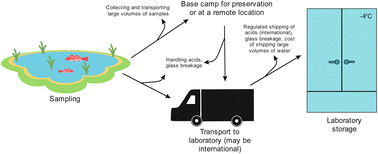
Environ. Sci.: Processes Impacts, 2023,25, 351-363
https://doi.org/10.1039/D2EM00409G
Sustainable organic waste management using vermicomposting: a critical review on the prevailing research gaps and opportunities
Overview of vermicomposting and its prevailing research gaps.
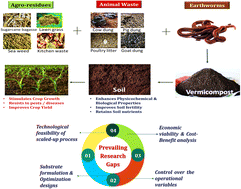
Environ. Sci.: Processes Impacts, 2023,25, 364-381
https://doi.org/10.1039/D2EM00324D
PFAS on atmospheric aerosol particles: a review
PFAS are detected in particulate matter around the world.
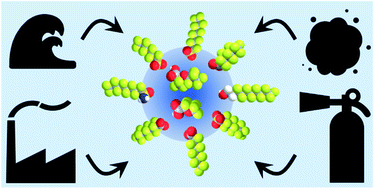
Environ. Sci.: Processes Impacts, 2023,25, 133-150
https://doi.org/10.1039/D2EM00002D
Assessing and managing environmental hazards of polymers: historical development, science advances and policy options
Approaches to regulatory assessment and management of polymers are reviewed and opportunities for improvements are highlighted based on a critical appraisal of current science on their environmental fate and effects.
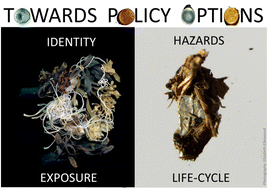
Environ. Sci.: Processes Impacts, 2023,25, 10-25
https://doi.org/10.1039/D2EM00386D
The geno-toxicological impacts of microplastic (MP) exposure on health: mechanistic pathways and research trends from a Chinese perspective
Potential genotoxicity of microplastics (MPs) includes accumulation of reactive oxygen species (ROS), DNA damage, cell death, inflammation or genetic regulation which in turn can have consequences for health, such as the induction of carcinogenesis.
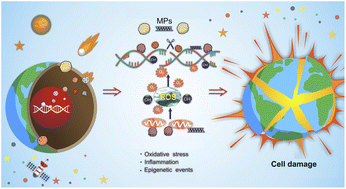
Environ. Sci.: Processes Impacts, 2023,25, 26-36
https://doi.org/10.1039/D2EM00301E
Chemicals/materials of emerging concern in farmlands: sources, crop uptake and potential human health risks
Contaminants of emerging concern (CECs) from different agricultural inputs enter the farmland soils and tend to get transferred to humans through meat from grazing animals and plant produce, causing serious health concern.
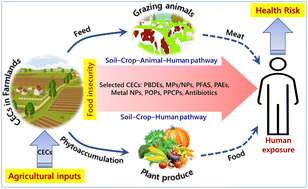
Environ. Sci.: Processes Impacts, 2022,24, 2217-2236
https://doi.org/10.1039/D2EM00322H
SARS-CoV-2 airborne transmission: a review of risk factors and possible preventative measures using air purifiers
This critical review presents the best remedy to protect human health by efficient materials-based air filters that can be used to air-purify and kill the dangerous SARS-CoV-2 virus and remove the other air pollutants.
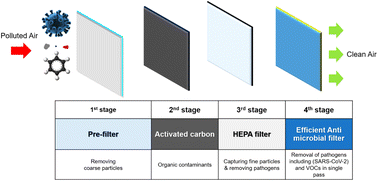
Environ. Sci.: Processes Impacts, 2022,24, 2191-2216
https://doi.org/10.1039/D2EM00333C
Updated knowledge, partitioning and ecological risk of pharmaceuticals and personal care products in global aquatic environments
Distribution of PPCPs in the African, Asian, European, and North and South American continents is presented and discussed.
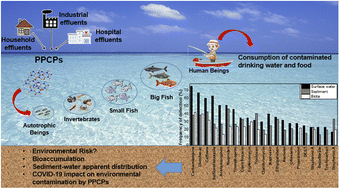
Environ. Sci.: Processes Impacts, 2022,24, 1982-2008
https://doi.org/10.1039/D2EM00132B
Alternative methods of monitoring emerging contaminants in water: a review
Anthropogenic activities have steadily increased the release of emerging contaminants (ECs) in aquatic bodies, and these ECs may have adverse effects on humans even at their trace (μg L−1) levels.
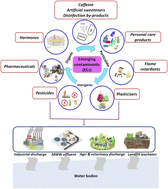
Environ. Sci.: Processes Impacts, 2022,24, 2009-2031
https://doi.org/10.1039/D2EM00237J
Research progresses on VOCs emission investigations via surface and satellite observations in China
1. Investigation of the VOCs emissions and source structure is summarized. 2. Characteristics of VOCs observations including surface and satellite are introduced. 3. Suggestions on improvement for future VOCs observation are provided.
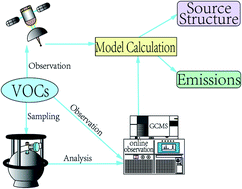
Environ. Sci.: Processes Impacts, 2022,24, 1968-1981
https://doi.org/10.1039/D2EM00175F
Influences of climate change on long-term time series of persistent organic pollutants (POPs) in Arctic and Antarctic biota
Time series of contaminants in the Arctic are an important instrument to detect emerging issues and to monitor the effectiveness of chemicals regulation. Climate change can affect the link between primary emissions and concentrations in Arctic wildlife.

Environ. Sci.: Processes Impacts, 2022,24, 1643-1660
https://doi.org/10.1039/D2EM00134A
POPs in Antarctic ecosystems: is climate change affecting their temporal trends?
Climate change is affecting Antarctica and the Southern Ocean and effects have been already reported for the abiotic compartments of the ecosystems, e.g. ice loss and iceberg calving.

Environ. Sci.: Processes Impacts, 2022,24, 1631-1642
https://doi.org/10.1039/D2EM00273F
Impact of global warming on regional cycling of mercury and persistent organic pollutants on the Tibetan Plateau: current progress and future prospects
Global warming profoundly affects not only mountainous and polar environments, but also the global and regional cycling of pollutants.
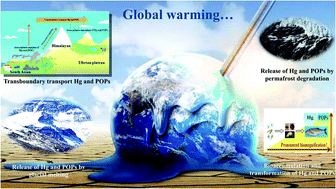
Environ. Sci.: Processes Impacts, 2022,24, 1616-1630
https://doi.org/10.1039/D1EM00550B
Climate change influence on the levels and trends of persistent organic pollutants (POPs) and chemicals of emerging Arctic concern (CEACs) in the Arctic physical environment – a review
Direct and indirect effects of climate change influence contaminant sources, transport, re-distribution and circulation in the physical environment of the Arctic. Linkages of such observations to Arctic ecosystem exposure and effects are needed.

Environ. Sci.: Processes Impacts, 2022,24, 1577-1615
https://doi.org/10.1039/D1EM00485A
The influence of global climate change on accumulation and toxicity of persistent organic pollutants and chemicals of emerging concern in Arctic food webs
Global climate change-driven shifts in physical and ecological processes may alter POPs concentrations in Arctic food webs.
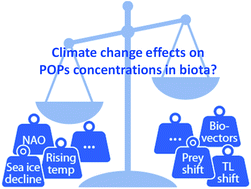
Environ. Sci.: Processes Impacts, 2022,24, 1544-1576
https://doi.org/10.1039/D1EM00469G
Influence of climate change on persistent organic pollutants and chemicals of emerging concern in the Arctic: state of knowledge and recommendations for future research
Future climate change in the Arctic will lead to loss of ice, snow and permafrost, increasing human activity and development, and changes in wind and ocean circulation patterns, that could alter the pathways, distribution and fate of contaminants.

Environ. Sci.: Processes Impacts, 2022,24, 1530-1543
https://doi.org/10.1039/D1EM00531F
A review of simulation experiment techniques used to analyze wildfire effects on water quality and supply
This review covers 40 laboratory- and plot-scale wildfire and rainfall simulation experiments which focus on wildfire hydrologic and water quality effects, guiding future researchers in the optimal design of their own simulation experiments.
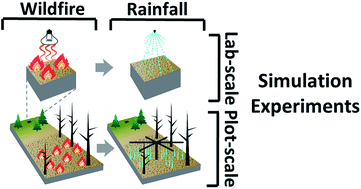
Environ. Sci.: Processes Impacts, 2022,24, 1110-1132
https://doi.org/10.1039/D2EM00045H
Microplastic profusion in food and drinking water: are microplastics becoming a macroproblem?
Microplastics are extremely complex, and as the food chain comes full circle, it is dreaded that these could have a deleterious influence on humans.
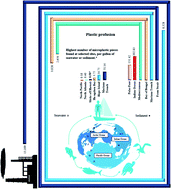
Environ. Sci.: Processes Impacts, 2022,24, 992-1009
https://doi.org/10.1039/D1EM00553G
Critical review of antibiotic resistance genes in the atmosphere
Our critical review compares ARG profiles in the atmosphere across different locations and discusses characterization methods, atmospheric transport, and future research questions.
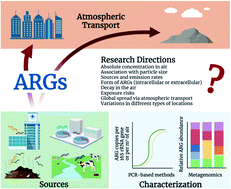
Environ. Sci.: Processes Impacts, 2022,24, 870-883
https://doi.org/10.1039/D2EM00091A
Emerging investigator series: contributions of reactive nitrogen species to transformations of organic compounds in water: a critical review
Reactive nitrogen species (RNS) pose a potential risk to drinking water quality because they react with organic compounds to form toxic byproducts.
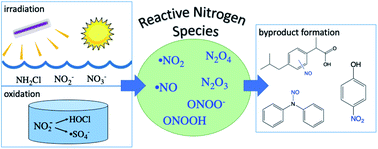
Environ. Sci.: Processes Impacts, 2022,24, 851-869
https://doi.org/10.1039/D2EM00102K
Mercury pollution in China: implications on the implementation of the Minamata Convention
This paper summarizes the atmospheric release of Hg, distribution of air Hg concentration, human exposure to MeHg and health impacts caused by Hg pollution in China.
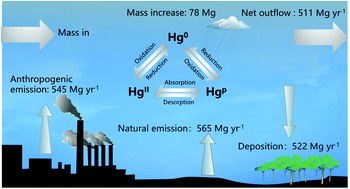
Environ. Sci.: Processes Impacts, 2022,24, 634-648
https://doi.org/10.1039/D2EM00039C
A pandemic-induced environmental dilemma of disposable masks: solutions from the perspective of the life cycle
Massive use of disposable masks and mismanagement could raise emerging environmental and bio-safety concerns.
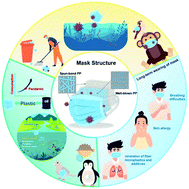
Environ. Sci.: Processes Impacts, 2022,24, 649-674
https://doi.org/10.1039/D1EM00509J
A review of microplastic fibres: generation, transport, and vectors for metal(loid)s in terrestrial environments
Synthetic fibre release is an important source of microplastics to agricultural soils, through the application of sewage sludge. Microplastics are potential vectors for the transport of sorbed metal(loid)s from wastewater to soils and organisms.

Environ. Sci.: Processes Impacts, 2022,24, 504-524
https://doi.org/10.1039/D1EM00541C
The oxidative potential of fresh and aged elemental carbon-containing airborne particles: a review
EC-containing airborne particles have diverse oxidative potentials dependent on their physical and chemical properties, which can be also changed by atmospheric aging processes.
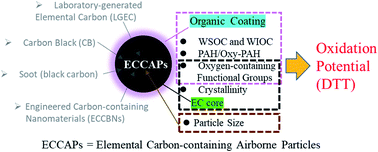
Environ. Sci.: Processes Impacts, 2022,24, 525-546
https://doi.org/10.1039/D1EM00497B
Epidemiological significance of the occurrence and persistence of rotaviruses in water and sewage: a critical review and proposal for routine microbiological monitoring
Globally, waterborne gastroenteritis attributable to rotaviruses is on the increase due to the rapid increase in population growth, poor socioeconomic conditions, and drastic changes in climatic conditions.

Environ. Sci.: Processes Impacts, 2022,24, 380-399
https://doi.org/10.1039/D1EM00435B
Secondary organic aerosol formation from monocyclic aromatic hydrocarbons: insights from laboratory studies
This review summarizes in detail the current knowledge in the chemical compositions, formation mechanisms, and physicochemical properties of secondary organic aerosols formed from monocyclic aromatic hydrocarbons.
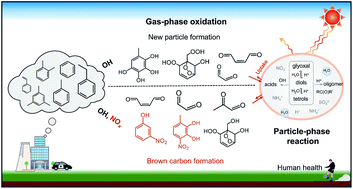
Environ. Sci.: Processes Impacts, 2022,24, 351-379
https://doi.org/10.1039/D1EM00409C
Emerging investigator series: microplastic sources, fate, toxicity, detection, and interactions with micropollutants in aquatic ecosystems – a review of reviews
Hundreds of review studies have been published focusing on microplastics (MPs) and their environmental impacts.
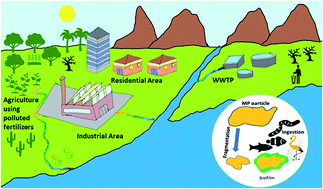
Environ. Sci.: Processes Impacts, 2022,24, 172-195
https://doi.org/10.1039/D1EM00443C
Effects of carbamazepine in aquatic biota
Carbamazepine (CBZ) is one of the most common pharmaceuticals found in the aquatic environment.
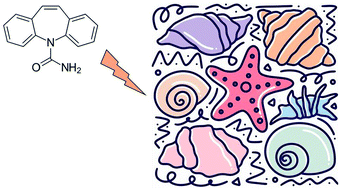
Environ. Sci.: Processes Impacts, 2022,24, 209-220
https://doi.org/10.1039/D1EM00328C
A review on nirS-type and nirK-type denitrifiers via a scientometric approach coupled with case studies
The nirS-type and nirK-type denitrifiers have attracted great attention.
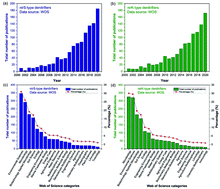
Environ. Sci.: Processes Impacts, 2022,24, 221-232
https://doi.org/10.1039/D1EM00518A
PFAS fate and destruction mechanisms during thermal treatment: a comprehensive review
Our critical review provides a comprehensive state-of-the-art understanding of PFAS thermal behavior and destruction mechanisms under different thermal destruction technologies and further research needs.
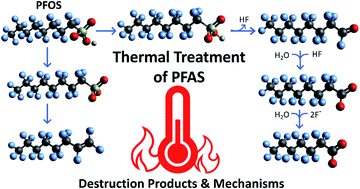
Environ. Sci.: Processes Impacts, 2022,24, 196-208
https://doi.org/10.1039/D1EM00465D
Occurrence, human exposure, and risk of microplastics in the indoor environment
Pathways of human exposure to MPs and associated risks.
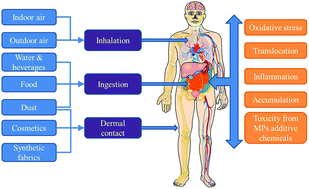
Environ. Sci.: Processes Impacts, 2022,24, 17-31
https://doi.org/10.1039/D1EM00301A
Review of ecotoxicological studies of widely used polystyrene nanoparticles
With polystyrene nanoparticles being widely used in various applications, there is a great need for deeper knowledge on the safety, fate and biological effects of these particles on both individual living organisms and the whole ecosystems.
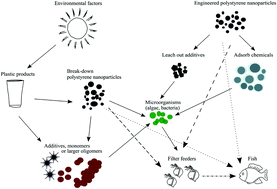
Environ. Sci.: Processes Impacts, 2022,24, 8-16
https://doi.org/10.1039/D1EM00375E
Effects of nanoplastics on microalgae and their trophic transfer along the food chain: recent advances and perspectives
Nanoplastics (NPs) have drawn increasing attention in recent years due to their potential threats to aquatic ecosystems.
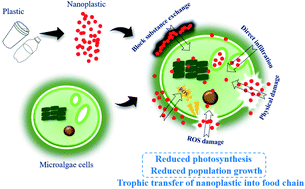
Environ. Sci.: Processes Impacts, 2021,23, 1873-1883
https://doi.org/10.1039/D1EM00438G
Environmental geochemistry of thioantimony: formation, structure and transformation as compared with thioarsenic
The review presents a way of comparing environmental geochemistry between thioantimony and thioarsenic, summarizing the latest knowledge about their formation, structure and transformation.
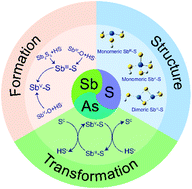
Environ. Sci.: Processes Impacts, 2021,23, 1863-1872
https://doi.org/10.1039/D1EM00261A
Emerging investigator series: the role of chemical properties in human exposure to environmental chemicals
We review how chemical properties govern human exposure to environmental chemicals through different routes from different sources.
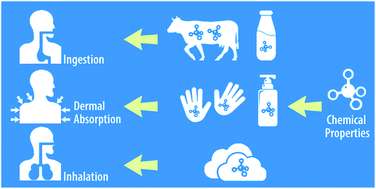
Environ. Sci.: Processes Impacts, 2021,23, 1839-1862
https://doi.org/10.1039/D1EM00252J
Battling the known unknowns: a synoptic review of aquatic plastics research from Australia, the United Kingdom and China
A synoptic review of aquatic plastics research from Australia, the United Kingdom and China is presented, highlighting (a) key research and management challenges, and (b) a need to converge on standardised methods and bioindicator species to make global comparisons more reliable.
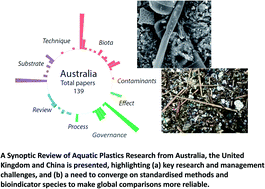
Environ. Sci.: Processes Impacts, 2021,23, 1663-1680
https://doi.org/10.1039/D1EM00175B
Insufficient evidence for the existence of natural trifluoroacetic acid
Examination of literatures surrounding purported natural trifluoroacetic acid (TFA) reveals that all TFA observations can be reasonably altributed to anthropogenic sources.
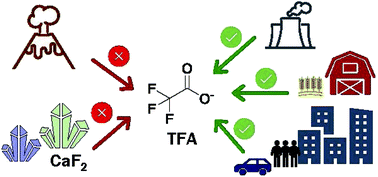
Environ. Sci.: Processes Impacts, 2021,23, 1641-1649
https://doi.org/10.1039/D1EM00306B
Research progress in the enhancement technology of soil vapor extraction of volatile petroleum hydrocarbon pollutants
At present, volatile petroleum hydrocarbon pollution in soil is still widespread and serious in China.
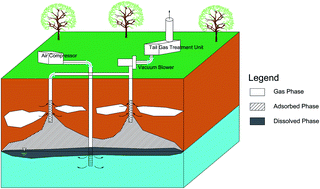
Environ. Sci.: Processes Impacts, 2021,23, 1650-1662
https://doi.org/10.1039/D1EM00170A
Absorption, distribution, and toxicity of per- and polyfluoroalkyl substances (PFAS) in the brain: a review
This review integrates current understanding on uptake, accumulation and distribution of PFAS in the brain, along with potential neurotoxic outcomes.

Environ. Sci.: Processes Impacts, 2021,23, 1623-1640
https://doi.org/10.1039/D1EM00228G
Chlorpyrifos in environment and food: a critical review of detection methods and degradation pathways
Chlorpyrifos pesticides residues in various sources and the comparision of the various detection and degradation methods of chlorpyrifos.
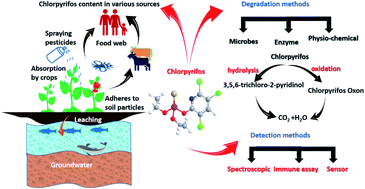
Environ. Sci.: Processes Impacts, 2021,23, 1255-1277
https://doi.org/10.1039/D1EM00178G
Geochemical controls on CO2 interactions with deep subsurface shales: implications for geologic carbon sequestration
CO2 sequestration in shales is controlled by the intrinsic properties of shale and external factors shown in grey and green boxes, respectively. The adsorption capacity (orange box) is influenced by both intrinsic properties and external factors.
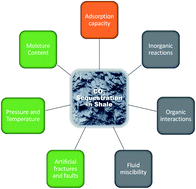
Environ. Sci.: Processes Impacts, 2021,23, 1278-1300
https://doi.org/10.1039/D1EM00109D
Distribution and ecological risk assessment of typical antibiotics in the surface waters of seven major rivers, China
The consumption and production of antibiotics in China rank highest in the world.
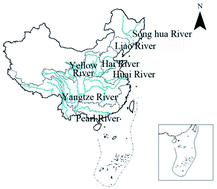
Environ. Sci.: Processes Impacts, 2021,23, 1088-1100
https://doi.org/10.1039/D1EM00079A
Finding essentiality feasible: common questions and misinterpretations concerning the “essential-use” concept
The essential-use concept is a tool that can guide the phase-out of per- and polyfluoroalkyl substances (PFAS) and potentially other harmful substances of concern.

Environ. Sci.: Processes Impacts, 2021,23, 1079-1087
https://doi.org/10.1039/D1EM00180A
Recent progress in research on PM2.5 in subways
This paper presents a comprehensive literature review on the research status of PM2.5 in subways over the past two decades.

Environ. Sci.: Processes Impacts, 2021,23, 642-663
https://doi.org/10.1039/D1EM00002K
Macroplastics in rivers: present knowledge, issues and challenges
The contextualization of macroplastics in a budget framework can help to improve our understanding of the physical processes determining macroplastic behaviour and impacts in rivers. Hence, better management practices can be adopted.
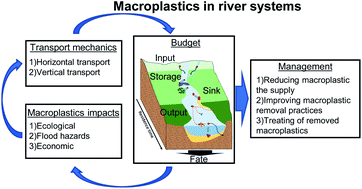
Environ. Sci.: Processes Impacts, 2021,23, 535-552
https://doi.org/10.1039/D0EM00517G
Phthalate pollution: environmental fate and cumulative human exposure index using the multivariate analysis approach
A comprehensive review was performed on the environmental fate, environmental occurrence, toxicity, physical–chemical properties, abiotic and biotic removal and degradation of phthalate esters (PAEs) to compute the overall phthalate exposure and their impact on human beings.
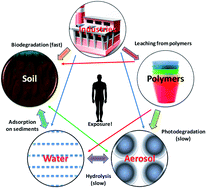
Environ. Sci.: Processes Impacts, 2021,23, 389-399
https://doi.org/10.1039/D0EM00396D
Ecotoxicology of persistent organic pollutants in birds
Considering the explosive growth of the list of persistent organic pollutants (POPs), the scientific community is combatting increasing challenges to protect humans and wildlife from the potentially negative consequences of POPs.
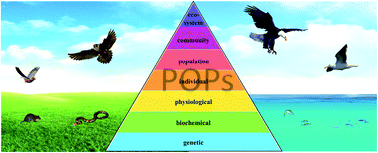
Environ. Sci.: Processes Impacts, 2021,23, 400-416
https://doi.org/10.1039/D0EM00451K
About this collection
In addition to high quality research papers, Environmental Science: Processes & Impacts features topical review articles. Reviews will be added to this webpage as soon as possible after publication.